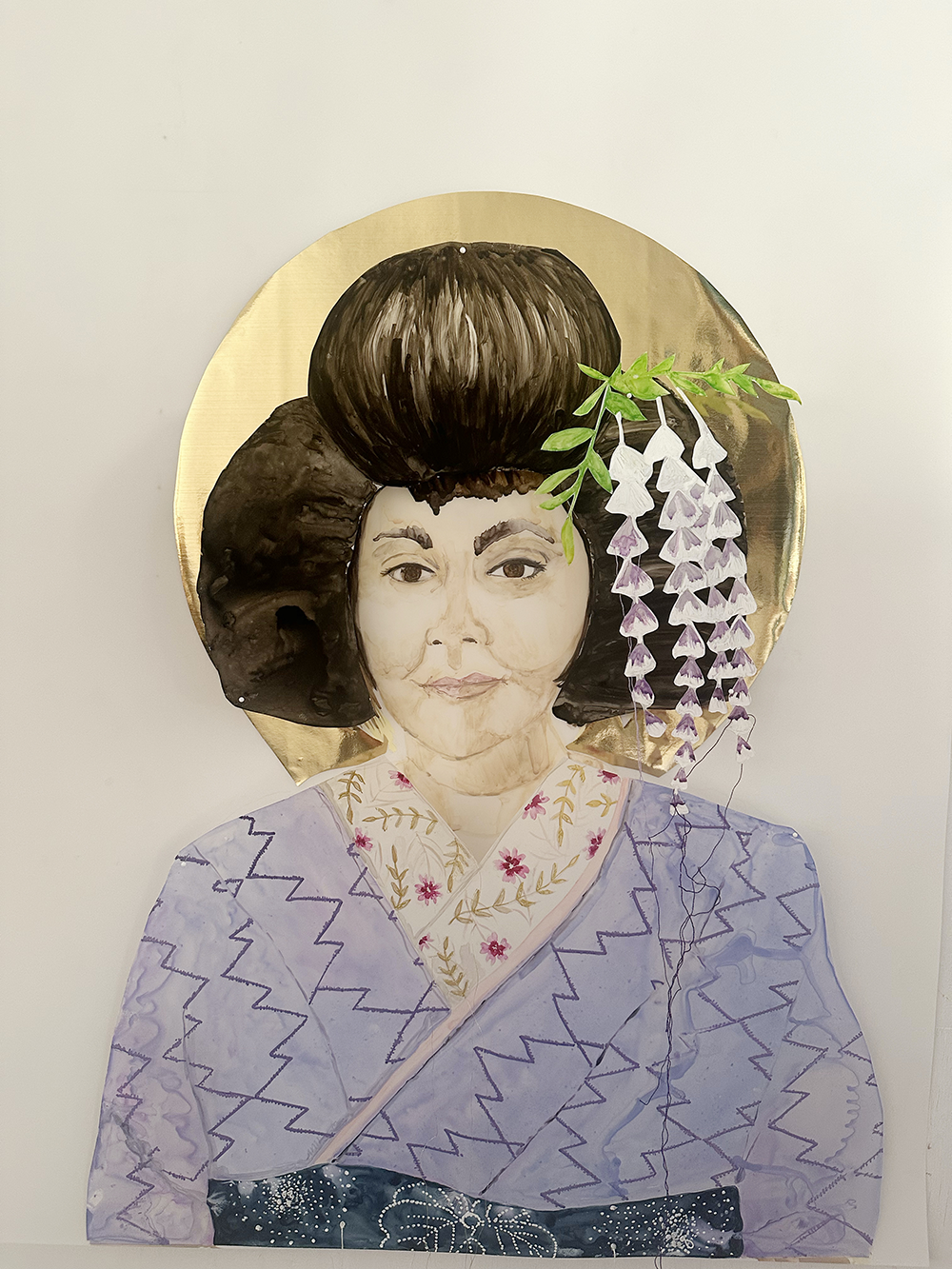Lisa Solomon creates evocative watercolor self-portraits wearing the traditional attire of the countries that make up her ethnic heritage, as well as the traditional clothing of countries she’s had misidentified as a part of her cultural history. Perfect, precise and delicate, the portraits depicting her true heritage are 35” by 23,” while those depicting countries that are not a part of her ethnic identity are 14” by 11.” Using native attire culled from photographic archives and evoking the style of traditional portrait artists, both Solomon’s costuming and positioning of her figure varies with each culture it represents.
Both of Solomon’s bodies of work are as layered and complex as personal lineage itself. Each are based on photographic images that she took of herself, from which she creates a watercolor painting. To these paintings she adds vividly colorful paper cutout garments and a variety of vivid geometric shapes pinned to the work, as well as embroidery thread and yarn. By using these multiple layers, Solomon creates not just beautifully realized, dimensionally alive portraits, but also draws attention to the layers of mixed racial and cultural identity present in both her own, and this country’s, often fraught heritage of immigration.
In the larger images that represent the countries in which she has heritage—Japan, Russia, Poland, Lithuania and Romania—her portraits use polychromatic watercolor for the skin and hair. Her physical positioning is both comfortable and commanding. In From from Japan, Solomon is clad in a zig-zag patterned lavender kimono, with a spray of lovely lavender and white flowers cascading from a traditional hairstyle. Her half-smile is proud and comfortable, almost reminiscent of an icon, with a gold circle positioned behind her head. From from Poland uses an emerald-green halo shape behind her in a three-quarter profile view. Here, the artist wears a floral, richly embroidered jumper and a slightly lighter emerald headscarf.

Lisa Solomon, But where are you from from? (Mexican), 2022. Courtesy of the Artist and Walter Maciel Gallery.
When representing countries in which she has no heritage, as in From from Ecuador, her face and hair remain in monochromatic watercolor, the black, gray and white emphasizing that the subject isn’t wholly present in her bright clothes because she does not belong in the garb of this nation. In these images, her smile appears a bit uncomfortable, her gaze slightly skeptical, as if questioning what she is doing in clothes which don’t “fit” her culturally. It is the same in other images depicting the artist in Inuit and Tibetan attire.
In an adjoining room of the gallery, Solomon’s brightly colored crochet links are gracefully looped and draped down the walls. The links are meant to reference a human connection that goes beyond cultural or ethnic differences or arbitrarily dictated points of origin.
Inclusive, beautifully wrought and highly relevant as our so-called melting pot society grows ever more divided, Solomon’s work shines with humanity and a spirit of belonging, regardless of culture or origin.


